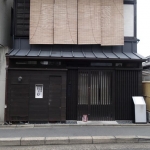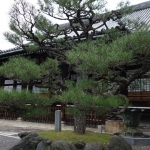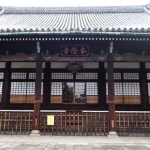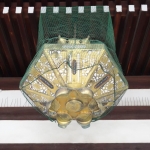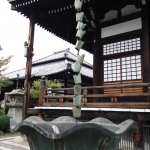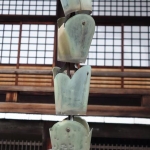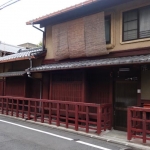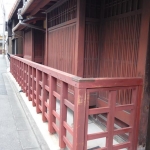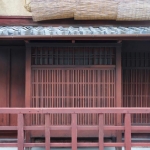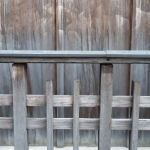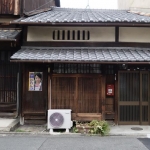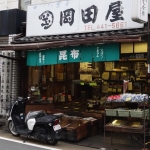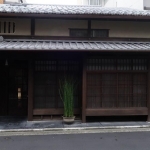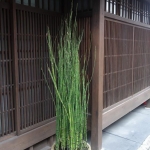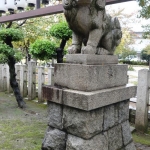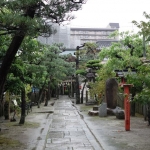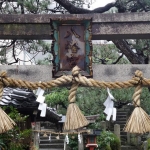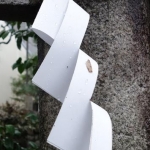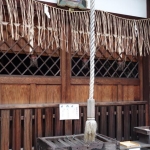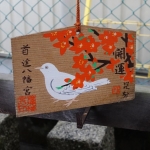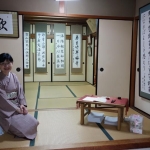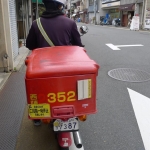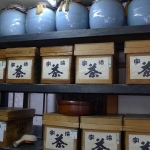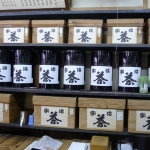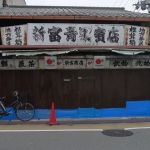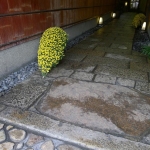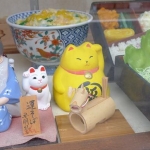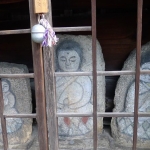Nishijin
Red: Places of Interest Blue: Eat Green: Sleep
Nishijin weaving was created in Kyoto over 1200 years ago by using many different types of colored yarns and weaving them together into decorative designs. These specialized procedures are tedious, but necessary to obtain the spectacular design needed to ensure the quality of Nishijin weaving.
The name Nishijin-ori (brocade) tells the story of how textile workers dispersed to various places returned to Kyoto in 1467 after the “Onin-no-ran (Onin War)” and restarted producing textiles around the remains of the territory of the West squad, which was led by Commander Yamana Sozen during the wartime.
The traditional atmosphere of this town makes it a pleasure to stroll around and visit the shops. You can purchase a Nishijin-ori obi (sash) or kimono at one of the specialty shops or department stores. For the obi in particular, check that a “Shoshi” (certificate stamp) from the Nishijin-ori Industry Union is attached.
At the turn of the 8th century, in 794, Kyoto, also known as “Heian-kyo” was introduced as the capital of Japan. Soon after the productivity of the Nishijin increased. This increased productivity was brought on in order to provide the Imperial court and aristocracy with the materials they needed. However, the need for the materials began to decrease causing these skilled weavers to go into business on their own rather than work for the textile offices.
The demand for the material continued to dwindle during the Muromachi Period due to the Onin War. In 1467, a major disaster struck the Nishijin weaving community; almost the whole town of Kyoto was demolished. The people of Kyoto fled for safety to nearby towns. Finally, in the 1480s the Onin War ended and the Kyoto residents returned home. Returning home and establishing residence contributed to the name Nishijin meaning west position. This name was established due to Kyoto residents’ settlement being located on the exact piece of land the Army of Yamana Sozen had occupied during the war. Another group established residence in the northern portion of Kyoto in Shinmachi-Imadegawa. This northern group is known for producing Nerinuki. Nerinuki is a shimmering fabric made from raw silk and scoured silk.
After the war Nishijin weaving began to thrive. The weaving community supplied and provided materials for both the Imperials courts and the Samurai lords. This increased their productivity leading to improvements in the product by using new procedures to create new designs. These designs incorporated the use of the gold brocade and damask silk that originated in Ming Dynasty, China.
During the Edo period, from 1603-1836, Nishijin weaving continued to thrive. Many Japanese studied the art and continued to pass down their trade through the generations by the skilled professionals. Until 1837, there was an abrupt stop to the Nishijin trade due to produce unavailability because of unproductive crops. Kyoto had fallen on hard times and was unable to continue weaving. In addition, Japan had decided to change their capital in 1869 and announced that Tokyo was the chosen location. This was thought to be the end of the Nishijin trade.
In the years to come the Nishijin trade began to flourish once again. Starting in 1872 with the trip to Europe to learn from the European weaving trade. During this trip the Europeans taught Japanese new techniques. The Japanese adapted to the use of European methods and machinery. The Europeans taught the Japanese how to produce Jacquard loom and the flying shuttle which are specific patterns developed for weaving.
By 1898 the Nishijin Textile trade was developed and encompassed the technology shared by the Europeans. This marked a beginning of a new era of Nishijin weaving and implemented the use of machinery in the Japanese trade. Nishijin has continued to be a successful textile industry throughout the years. Today Nishijin weaving is seen more frequently in Japanese ceremonies. The main ceremony to view this unique trade would be in a wedding. The work of the Nishijin weave is present in the traditional clothing of the bride. Her traditional Kimono is beautiful and shows the Nishijin designs that have been handed down through the generations. These traditional designs range from scenes of nature, different breeds of birds and several different type of flowers. There are many other products available through Nishijin weaving. These products range from Kimono scarves, different types of Kimonos, belts, shawls, many different types of cloth and decorations that adorn the walls of Japanese homes.
At the Nishijin Textile Center, there are kimono pattern books from the Meiji period in the late 19th century, showing the symbols of the four seasons, with cherry blossoms and maple leaves in autumn set inside a classical snowflake frame, and a background of summer waves. Nishijin, together with Milan and Lyon, are the top three centers in the world for silk fabrics.
http://www.nishijin.or.jp/eng/eng.htm
Festival: Sept. 23
Nishijin Traditional Cultural Festival at Senryou-ga-tsuji
Senryo-ga-tsuji is an area which played an important role in the Nishijin area where a lot of a raw silk and woven fabric wholesalers started and prospered; Quite a few traditional houses along Omiya Street are open to the public and they also exhibit their cultural heritages.
10:00-17:00; Access: Kyoto City Bus #9, get off at Ichijo Modoribashi Seimeijinja-mae; The event will be held along Omiya street, south of Imadegawa; Tel: 075-432-3228.
Sleep in this area:


